Williston in the World
At Williston, students can find an array of opportunities to do just about anything. Sports, clubs, arts, and other extracurriculars are more than abundant, but for some students it still is not enough. The Williston in the World Series will profile students and faculty who go above and beyond their responsibilities at Williston. If this reminds you of yourself or someone you know within our community, contact [email protected].
Vikram Dalmiya
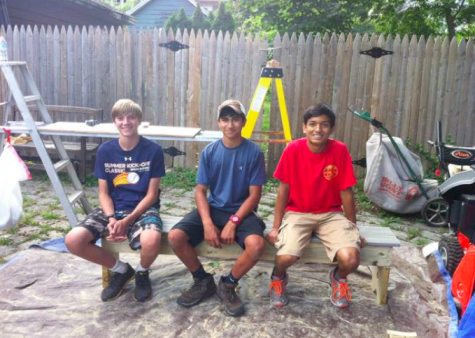
Vikram (center) hard at work on his Eagle Scout project.
At just fourteen years of age, Vikram Dalmiya ‘18 is the second youngest New Jersey resident to ever be named an Eagle Scout.
“Eagle Scout is the highest advancement rank in Boy Scouting,” According to the Boy Scouts of America’s official fact sheet. “In 2013, the average age of boys earning the Eagle Scout rank was [seventeen] years of age,” it denotes.
Achieving this rank by the age of fourteen is not unheard of, but it is noteworthy.
“I’ve been a Cub Scout since kindergarten,” states Dalmiya. “Then in 5th grade I joined the Boy Scouts.” He continues, “So from 5th grade to 8th grade I was working to get my Eagle.”
Dalmiya quickly advanced to the rank of Life Scout. After earning his 21 merit badges and serving actively as a leader in his unit for six months, the required amount of time, Dalmiya was ready to begin the process of becoming an Eagle Scout.
This process includes a project of choice that must be approved by his school, Scoutmaster, troop committee, and council, Dalmiya began his Eagle Scout project.
Over the summer, he finished his project. “The benches at my middle school’s basketball court were destroyed and falling apart.” Dalmiya notes, “So my project was to build six benches that were portable and long-lasting.” With composite decking material and pressure treated wood, he was able to complete the six benches before arriving to Williston this fall.
After being nominated by the National Eagle Scout Association over Thanksgiving Break, Dalmiya was approved by the Board of Review that determined that he had completed the requirements for the Eagle Scout rank.
When asked about how much this whole experience meant to him, Dalmiya was brief. “It means everything,” he said.
“It’s reassuring my goals for the future,” he states, remarking on the fact that he has aspirations to attend West Point. “I know now that doing anything else will be so much easier… there is no end to what I can accomplish.”
Emily Grussing
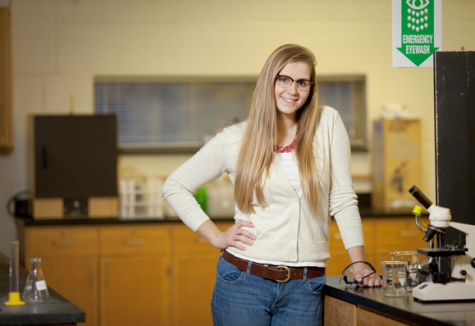
Emily Grussing: scientist extraordinaire.
Alongside a group of PhD students and renowned scientists, Emily Grussing ‘15 spent her summer working at a computational genetics laboratory at the Norris-Cotton Cancer Center at Dartmouth-Hitchcock.
Being the youngest member by three years was daunting, but Grussing rose to the challenge. Under the guidance of Dr. Jason H. Moore B.S., M.A., M.S., Ph.D., the Associate Director of the Norris-Cotton Cancer Center and a professor at Dartmouth, and Christian Darabos, PhD, post-doctoral fellow, Institute for Quantitative Biomedical Sciences (iQBS), Dartmouth College; Grussing was in good hands.
Grussing had no previous experience with computer programing and coding, but that changed very quickly. “I learned three languages this summer,” she states, referring to her aquired fluency in Java, R Studio, and Python.
Based on the success of her work, it was apparent that Grussing was a fast learner. She was assigned projects that entailed weeks of research and painstaking work. Her main project encompassed a nine week process that included research, programing, and analysis.
Under Christian Darabos, PhD, Grussing worked on identifying phenotypes, or negative health effects, of the chemicals that Americans are most commonly exposed to.
“I did the heavy lifting. I did the research. I thought that I would hand it over and be done with it,” she states, “But instead, [Darabos] asked me to analyze the information and write the portion of the paper that discussed the significance of what the entire project was about.”
As a result of Grussing’s work, her analysis of the relationship between the phenotypes and the diseases, as well as what substances cause the most diseases, was included in the project’s paper.
After being published in a scientific journal at just seventeen years old, Grussing’s hard work proved effective.
The paper has already been published by World Scientific, a scientific publisher, and it has been submitted to the Pacific Symposium on Biocomputing (PSB) 2015. It will be published by PubMed in 2016.
Katie Murray
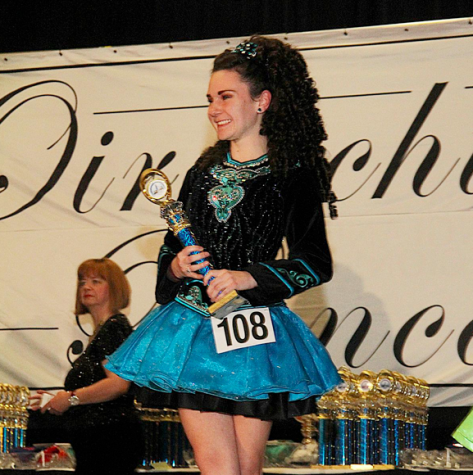
Katie Murray after placing 5th in the New England Regional Championships for Irish Dancing.
Irish Dance Club founder Katie Murray ‘15 has more than just a passion for Irish Dance. She began at the age of eight, and in November of 2014 placed 5th in the New England Regional Championships.
“How do I describe it?” Murray remarks, “It’s what you see in Riverdance. It involves a stiff upper body and a lot of foot work that goes along with the music.” There are two different types of Irish Dance: soft shoe and hard shoe. “Soft shoe is about grace and precision, while hard shoe is about beats and rhythms.”
Murray states, “Not only is dance a creative and physical outlet for me, it has taught me how to work hard and succeed in all aspects of my life.”
As a Proctor, club leader, Editor-in-Chief of The Willistonian, a Writing Center and Arête tutor, and a member of Cum Laude Society, Murray has a lot on her plate, but she manages to make time for what she loves. “It’s worth it,” she states, “If you love something as much as I love Irish Dance, it merits the sacrifice.”
Murray competes in approximately twenty feiseanna (Irish Dance Competitions) a year. She takes more than six hours of classes per week, not to mention the one hour commute each way to The Golden Harp Academy in Bolton, Connecticut where Murray has been dancing for the past year. At home, she practices more than five hours a week, always looking for ways to improve.
“Irish Dance is never boring,” Murray says, “It’s my tenth year, but I still have so much to learn.”




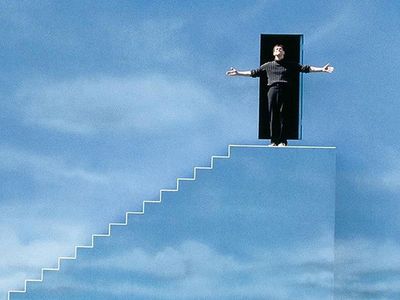



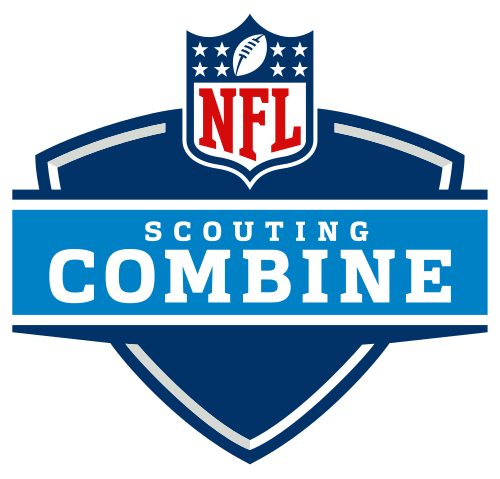

Uncle Fred Murray • Feb 6, 2015 at 11:24 PM
Katie is typical of all the Murray girls. Smart, talented, attractive and nice